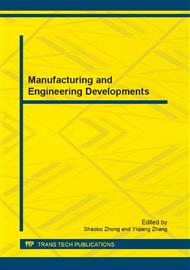p.741
p.745
p.750
p.755
p.759
p.764
p.768
p.775
p.780
Design of Parameter Adaptive Fuzzy Controller for the Planar Double Inverted Pendulum
Abstract:
In this paper, The mathematical model is established using analytical dynamics method for planar double inverted pendulum, based on optimal control theory, parameter adaptive fuzzy controller is designed by use of variable fusion technology, thereby it can reduce the dimension of the input variables of the fuzzy controller, greatly decrease the number of the fuzzy rules, and the impact of the quantization factor on the control effectiveness is studied. The designed controller for system is applied in simulation experiments, the results show that the fuzzy controller can guarantee good control precision, fast response, control planar inverted pendulum stability.
Info:
Periodical:
Pages:
759-763
Citation:
Online since:
January 2013
Authors:
Price:
Сopyright:
© 2013 Trans Tech Publications Ltd. All Rights Reserved
Share:
Citation:


